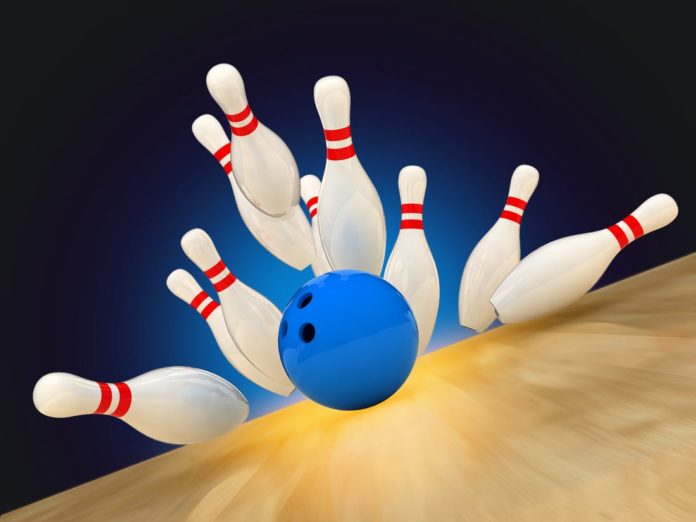
Who doesn’t love a game of bowling? It’s a popular game all over the world and is something that people of all ages and abilities can play. But despite bowling’s popularity, do you know how bowling is scored?
According to usbowling.com, scoring a game of bowling can be difficult if you have never learned how. Fortunately, today many automatic scoring systems can help keep track of the score. Read some of the following advice on how to score a bowling game, and soon you’ll become a supreme bowling expert.
The aim of the game

Bowling is a simple, straightforward game. The objective is to try to knock down as many pins in as few turns as possible. While you get two turns to try and do this, you’re rewarded with more points if you knock them down on your first turn.
Each pin that you knock down is worth a single point, but if you hit a strike or a spare, you’ll also earn some additional points.
While most bowling alleys have a computerized system to calculate your score, it’s still worth knowing how to score a game and what different elements are worth, in case you ever decide to play at home or in a more traditional bowling alley. Knowing how to get different points can also help you create a strategy when playing a game.
Strikes and spares

Strikes and spares are the terms for what happens when you manage to knock down all of the pins. A ‘strike’ happens when all ten pins are knocked down, while a ‘spare’ is what happens if all pins are knocked down on the second (and final) turn.
When you score a strike, your score sheet should be marked with an X, while a spare is marked with a /.
Each one features a different number of additional points, which can vary depending on how the next turn plays out.
-
Strikes
Players who score a hit are automatically given 10 points, one for each pin that’s knocked down. You’re also given additional points equal to how many you score in your next frame.
-
Spares
A spare, meanwhile, is also awarded 10 points. You’re given additional points equal to how many you score in the first round of your next frame.
-
Double
A double is when you score two consecutive strikes. A double gives you 20 points in the first frame plus the number of pins scored in the third frame.
A double in the second frame is the same as scoring a strike.
-
Turkey
A turkey is when you score three strikes in a row, giving you 30 points, plus the same as scoring a double in the second frame, or the same as a strike in the third frame.
-
Four-bagger
If you’re lucky enough to score a four-bagger, you’ll be awarded 30 points in the first frame, and 30 points in the second game. The third frame is worth the same as scoring a double, while the fourth frame is the same as scoring a strike.
-
Open frame
An open frame is the number of pins you knock down without scoring a strike or a spare. If you knock six pins down between your two turns, you’ll score 6 points.
Scoring a bowling game

To keep score during a bowling game, you’ll need a bowling sheet. While this is done for you on a screen at most bowling alleys, you can easily draw a sheet yourself to help you keep score. As an example, a bowling sheet would look like this:
Frame 1:
In the first frame, you scored a strike, giving you 10 points + the number of points in your next frame (8).
Frame 2:
Your score was 8, bringing your total to 16.
Frame 3:
Frame three resulted in a spare, which was 10 points, plus the number of points in your first turn on the next frame (7).
Frame 4:
Your combined total was 8, bringing your score to 51.
Frame 5:
Your score was 8, bringing your total to 59
Frame 6:
You scored another strike, which gave you a total of 10 points, plus your points from your next frame (9), giving you a combined score for that frame of 19.
Frame 7:
Your score of 9 brings your total score to 87
Frame 8:
Your score of 7 brings your total to 94.
Frame 9:
Your score of 9 brings your total to 103.
The final frame:

In your final frame, you scored nine, giving you a grand total of 112. Had you scored a strike or a spare from your first two turns, you would have been given a bonus turn. This is because a second and third turn would be needed to calculate your strike or spare score.
The highest possible score in bowling is 300, which can only be achieved by scoring 12 consecutive strikes. 9 would be bowled in the mainframes, and then three in the final frame.
To put this into context, a professional bowler could score up to 300, while a more amateur bowler would likely score somewhere around the 70-80 mark. If you can score above 100, then you could consider yourself an above-average bowler.
Bowling can take a lot of practice to get you to a good standard. It can also be unpredictable – one game you could score a perfect bowl, while the next, you could end up with all of your balls in the gutter! Understanding how the scores work can help you work out what to aim for in the hopes of winning a game. Improving your technique will help you to boost your scoring ability while using the right equipment for you, such as the correct size and weight bowling ball, which will make a big difference to your game.














